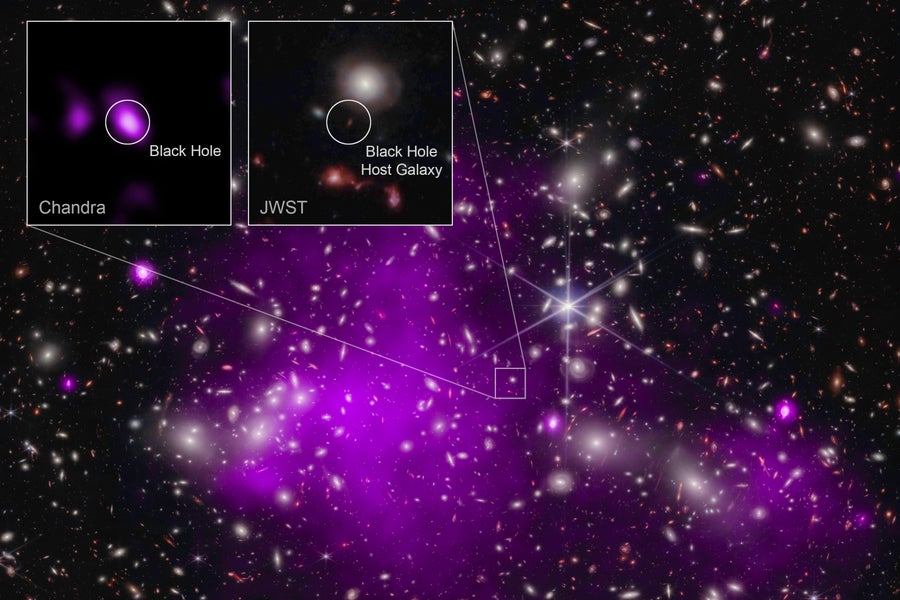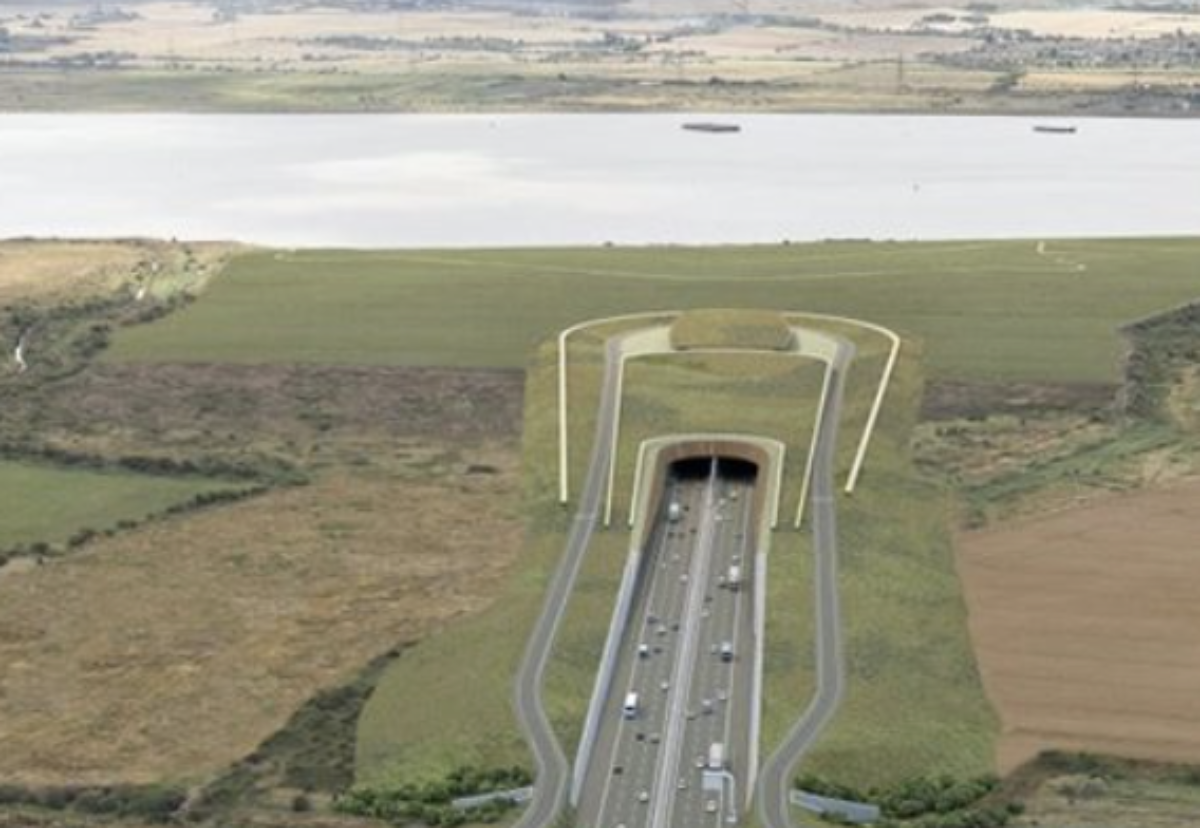As astronomers read back into the first chapters of the universe’s history, they have uncovered a horde of gigantic black holes that seem to have matured much faster than scientists thought possible.
Priyamvada Natarajan is akin to a cosmic biologist. She studies the life of these precocious black holes, objects so dense that they trap all matter and light within their grasp. As an astronomy graduate student, Natarajan was among the first to treat black holes as populations rather than individual objects by studying their general taxonomy and evolution as though they were bats in a rain forest. Now an astrophysicist at Yale University, Natarajan continues to study the behavior of these animals, and she’s turned her focus to understanding how they’re born.
Traditionally, black holes form in the wake of a large stellar explosion, and they grow in mass as they feast on nearby gas reservoirs. But a handful of observations of supermassive black holes in the very early universe have suggested that there’s more to the picture. In 2006 Natarajan and her colleagues proposed a radical new explanation for how disks of gas could collapse directly into abnormally massive baby black holes without ever forming a star. Last year a joint observation by the James Webb Space Telescope (JWST) and the Chandra X-ray Observatory spotted a distant, radiant black hole that appears to verify Natarajan’s prediction at last.
On supporting science journalism
If you’re enjoying this article, consider supporting our award-winning journalism by subscribing. By purchasing a subscription you are helping to ensure the future of impactful stories about the discoveries and ideas shaping our world today.
“It’s definitely a very strong case in favor of these heavy black hole seeds,” says Raffaella Schneider, an astrophysicist at Sapienza University of Rome. “[Natarajan] having proposed this idea really helped the community to enlarge our view on the different possibilities that can occur.”
Natarajan spoke to Scientific American about how the recent observations support her proposal for “direct-collapse black holes” and what they tell us about the ancestry of these creatures.
[An edited transcript of the interview follows.]
What got you interested in studying black holes and their origins?
I’ve always been attracted to the invisible entities in the universe. My work has principally been on trying to understand on a fundamental level the nature of these dark components of the universe—dark matter and dark energy, as well as black holes. I find these objects incredibly seductive and enigmatic. They serve as a reminder of the limits to our knowledge, the places where the known laws of physics break down.
Over the past few decades, black holes have gone from a purely mathematical concept to real objects we can observe, and they’ve now moved center stage in our understanding of how galaxies come to be. The universe is just littered with black holes of all sizes. They are an important part of our cosmic inventory, so understanding how they came to be is a fundamental open question.
What don’t we know about black hole formation?
Typically, black holes are born when stars die. When the most massive stars undergo gravitational collapse, the little nugget they leave behind is a black hole. That’s the pretty clearly established origin story.
The most distant black hole ever detected in x-rays is located in the galaxy UHZ1, imaged with NASA’s Chandra X-ray Observatory (purple) and infrared data from NASA’s James Webb Space Telescope (red, green, blue).
But around two decades ago, as we started to look farther and farther back into the universe with missions such as the Sloan Digital Sky Survey, we found a handful of very massive black holes —up to around a billion times the mass of the sun—when the universe was just one to two billion years old. Given the rate at which we know black holes like to feed, there just wasn’t enough time to take the tiny seeds you’d get from the first stars exploding and grow them to these behemoth black holes. Over the next few years, we started to see that these weren’t just a few freak objects; there was actually an entire population of supermassive black holes in the very early universe. And that’s when the conundrum began.
Some people began exploring whether there might be ways for black holes to feed much faster than the known limit. Theoretically there are, but we have yet to see convincing observational indications of this. So I started wondering, what if we just started with larger seeds? My team and I realized that if a gas disk is radiated by stars from a nearby galaxy, it could circumvent the star-formation process and collapse directly into a black hole. This direct-collapse black hole would be much larger at birth—1,000 to 100,000 times the mass of the sun. That black hole could then merge with a nearby galaxy and easily grow to the size we see.
How was this proposal received by the community?
We had a lot of people pushing back. They said, “The physics is cute, and it makes sense, but is this process efficient enough to actually happen in the universe?” At the time, these epochs of the universe were not accessible observationally. To watch these initial seeds being formed, we needed to look back to the first billion years after the universe’s formation.
That’s why the promise of JWST was so tantalizing; it kept us motivated to keep working on this. We began thinking about what signs we could look for as evidence of direct-collapse black holes, and we came up with an idea. In nearby galaxies, the mass of all the stars is often 1,000 to 10,000 times the mass of the central black hole. But in these direct-collapse scenarios, for a brief period of time, the mass of the black hole could actually be comparable to the mass of the stars. This means you should see an extremely bright, actively feeding black hole that essentially outshines all the stars in the galaxy. If we could view one of these galaxies in both x-ray and infrared light, we would see distinct signatures of the overmassive black hole in its center.
Even with JWST and Chandra, however, we can’t see far enough back to directly witness early black hole seeds being formed. But I realized that if nature were kind to us, one of these galaxies could be hiding behind a magnifying glass: a galaxy cluster rich in dark matter that acts as a dramatic gravitational lens. I had been working to map some of these gravitational lenses with the Hubble Space Telescope, and I suggested we focus our new telescopes on this very complex cluster called Abell 2744. I knew every part of that dark matter map inside and out. I was hopeful, but this was a real shot in the dark.
And how did it pay off?
Lo and behold, early last year I got a call from my colleague, astrophysicist Akos Bogdan, who had seen the Chandra observations of galaxies behind the Abell 2744 lens. He said, “Are you sitting down? I think we found something.” By complete coincidence, the spectrum from one galaxy matched unbelievably well with the prediction plots we made in 2017 of a hypothetical detection. It was gobsmacking. It checks off every predicted property. It’s very compelling evidence that direct-collapse black holes do form in the early universe. This is no longer just a speculation.
Now, there could still be other ways to form black hole seeds. That’s what I’m moving onto next: trying to uncover other pathways and what their unique observational signatures could be. It opens a whole Pandora’s box of exciting questions.
I can imagine. How did it feel to finally find evidence for your idea in nature?
This is exactly what I find so thrilling about being an astrophysicist—I want theoretical ideas to be confronted with observational data. We are in this amazing time in history where you can make a prediction and within your lifetime it can be validated or invalidated. It’s precisely why people say we’re living in the golden age of cosmology. I am deeply grateful.

Gregory Daniels is your guide to the latest trends, viral sensations, and internet phenomena. With a finger on the pulse of digital culture, he explores what’s trending across social media and pop culture. Gregory enjoys staying ahead of the curve and sharing emerging trends with his readers.








